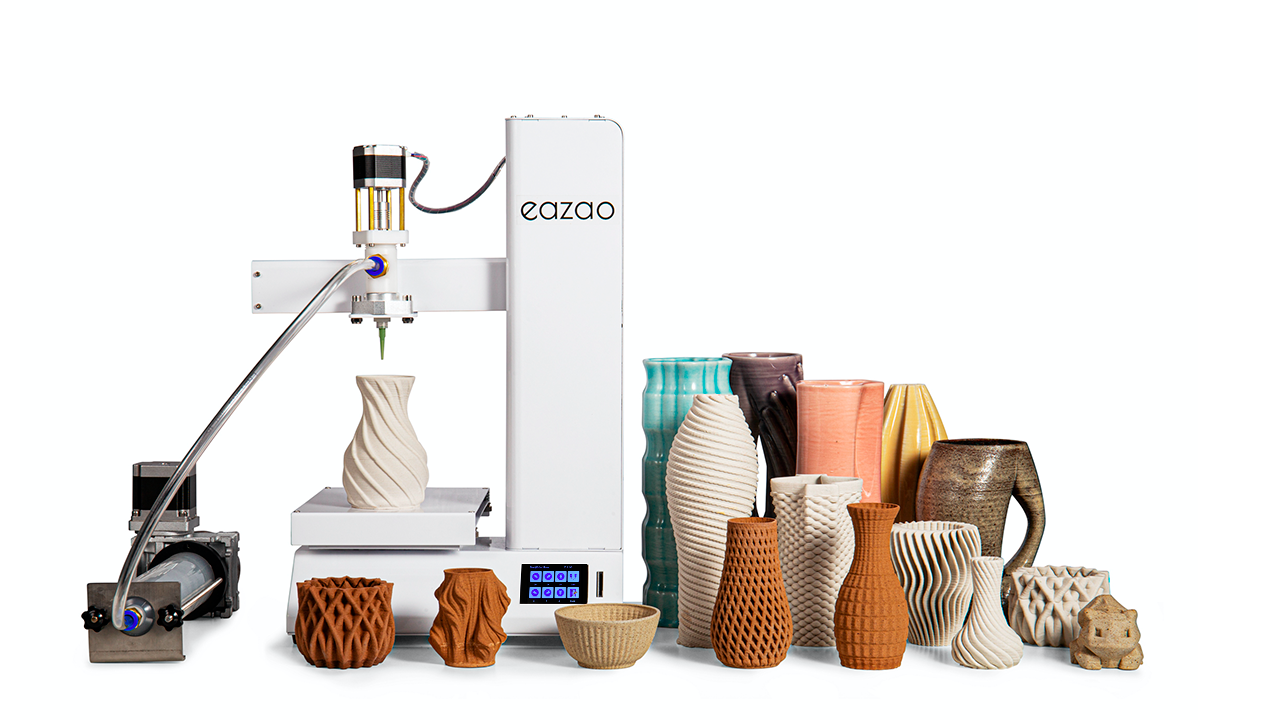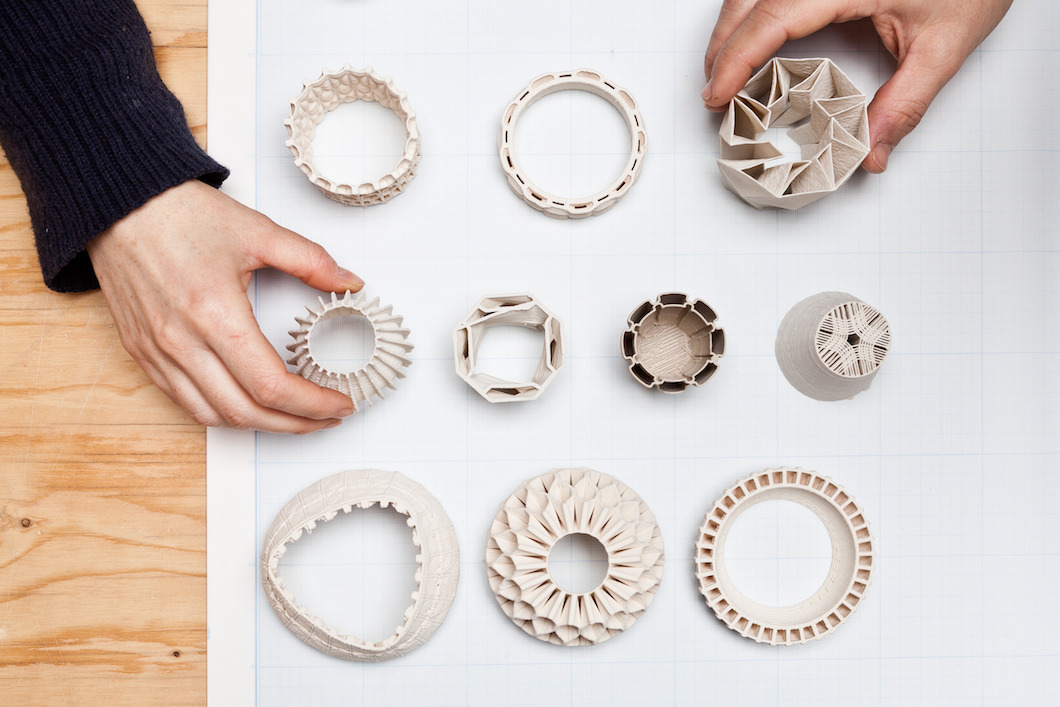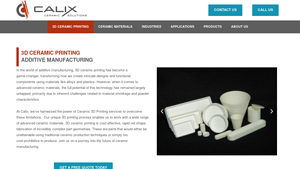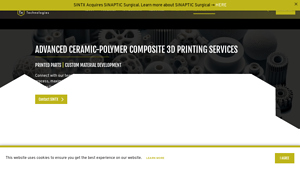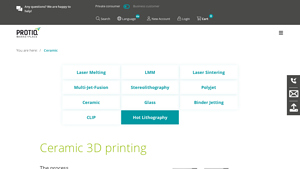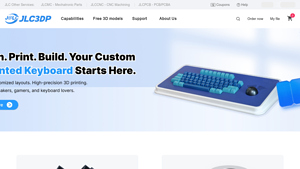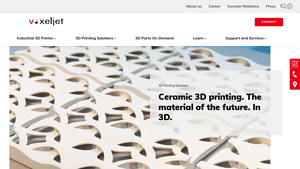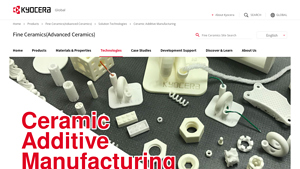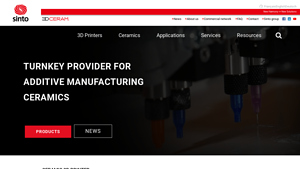Ceramic 3D Printing Services Guide: Type, Cost, Top List…
Introduction: Navigating the Global Market for ceramic 3d printing services
In an ever-evolving global landscape, sourcing reliable ceramic 3D printing services poses significant challenges for international B2B buyers. The intricacies involved in selecting the right providers, understanding diverse technologies, and navigating variable cost structures can overwhelm even the most seasoned procurement professionals. This guide serves as a comprehensive resource for organizations keen to leverage the advantages of 3D printing technologies in ceramics, addressing key factors like types of services, application areas, and effective supplier vetting practices.
The scope of this guide encompasses essential insights into the range of ceramic 3D printing solutions available today—from rapid prototyping to high-volume production of complex geometries. We delve into practical applications across diverse industries, including aerospace, automotive, healthcare, and environmental solutions, highlighting how advanced ceramic materials can meet specific operational needs.
In addition to facilitating informed purchasing decisions, this guide empowers buyers from regions such as Africa, South America, the Middle East, and Europe—specifically in countries like Nigeria and Brazil—to understand core aspects of cost evaluation and supplier credibility. With actionable insights and best practices, this resource aims to streamline the procurement process, allowing organizations to harness the full potential of ceramic 3D printing while minimizing risk and maximizing return on investment.
Understanding ceramic 3d printing services Types and Variations
| Type Name | Key Distinguishing Features | Primary B2B Applications | Brief Pros & Cons for Buyers |
|---|---|---|---|
| Rapid Prototyping | Quick turnaround for prototypes without tooling costs | Product development, R&D for various industries | Pros: Fast lead time, low cost. Cons: May lack full durability for final products. |
| Ceramic Cores | Complex designs that surpass injection molding capabilities | Investment casting in aerospace and defense | Pros: High complexity handled, better performance. Cons: Higher initial cost, niche application. |
| Ceramic Molds | Ability to produce ready-to-pour molds, eliminating wax patterns | Foundries for casting processes | Pros: Reduces lead times significantly. Cons: Requires advanced design knowledge. |
| Porous Structures | Engineered with layered designs for specific flow or filtration needs | Environmental solutions like filtration systems | Pros: Customized for performance, consistent flow rates. Cons: Can be complex to design and validate. |
| Functionally Graded Materials | Multi-material layers for compatibility and unique properties | Medical applications, engine components | Pros: Tailored material properties, seamless integration. Cons: More complex production process, potentially higher costs. |
What are the Key Features and Benefits of Rapid Prototyping in Ceramic 3D Printing Services?
Rapid prototyping emphasizes speed and economic efficiency, catering to businesses requiring swift iterations of designs. This method allows for the quick creation of prototypes with complex geometries, utilizing ceramics that may not be viable with traditional methods. Ideal for industries engaged in product development or research and development (R&D), benefits include minimal upfront tooling costs and the ability to gauge the feasibility of designs early on. However, buyers should consider the material durability, as these prototypes may lack the robustness needed for eventual production.
How Do Ceramic Cores Enhance the Investment Casting Process?
Ceramic cores are significant for their ability to support intricate casting designs that traditional methods struggle to manufacture. Industries such as aerospace and defense benefit from this specialization, where precision and reliability are paramount. By eliminating the limitations of injection molding, ceramic cores can be produced economically in low quantities, fostering innovation in casting techniques. Buyers need to assess whether the advanced capabilities justify the initial costs, especially when dealing with specialized projects.
What Advantages Do Ceramic Molds Offer Foundry Operations?
Ceramic molds stand out for their ability to facilitate the casting process without the need for wax patterns. This enables foundries to transform designs into ready-to-pour molds rapidly, which can dramatically cut down lead times. Primarily used in industries requiring precision castings, such as automotive and aerospace, the mold’s design flexibility offers substantial time savings. However, buyers must ensure they have the requisite design knowledge, as complex molds require sophisticated production capabilities.
Why Are Engineered Porous Structures Important for Environmental Solutions?
Engineered porous structures in ceramic 3D printing are tailored for specific applications where flow control and filtration are critical, such as in environmental engineering and filtration systems. These structures provide consistent performance by being designed to capture contaminants effectively, surpassing the capabilities of traditional filtering systems. With their customized design, they can offer enhanced efficiency for applications involving air and water purification. Buyers should keep in mind potential complexities in the design and validation processes, impacting overall costs.
What are the Unique Benefits of Functionally Graded Materials in B2B Applications?
Functionally graded materials (FGM) in ceramic 3D printing enable the production of components with tailored properties through the layering of different materials. This technique is especially pivotal for high-performance applications in medical and aerospace sectors, where combining properties like high strength and low weight is critical. While FGMs provide significant advantages in performance and material integration, the production process is inherently complex, and buyers should be prepared for possibly higher costs correlated with achieving the desired performance characteristics.
Key Industrial Applications of ceramic 3d printing services
| Industry/Sector | Specific Application of ceramic 3d printing services | Value/Benefit for the Business | Key Sourcing Considerations for this Application |
|---|---|---|---|
| Aerospace | Lightweight structural components and engine parts | Enhanced fuel efficiency and performance in aircraft | Certification standards, material specifications, lead times |
| Automotive Manufacturing | High-temperature exhaust systems and turbocharger components | Increased durability and performance under extreme conditions | Reliability in thermal resistance, material sourcing options |
| Medical & Healthcare | Custom orthopedic implants and dental prosthetics | Improved patient outcomes and personalized treatment options | Compliance with biocompatibility standards, material traceability |
| Oil & Gas | Wear-resistant components for drilling and exploration tools | Increased product lifespan and reduced operational downtime | Resistance to corrosive environments, custom fabrication needs |
| Environmental Solutions | Advanced filtration systems for air and water purification | Enhanced system efficiency and reduced maintenance costs | Performance metrics, regulatory compliance, layout compatibility |
How is Ceramic 3D Printing Transforming the Aerospace Industry?
In aerospace, ceramic 3D printing is revolutionizing the production of lightweight structural components and engine parts. By leveraging advanced ceramic materials, manufacturers can produce components that resist extreme temperatures and pressures, enhancing fuel efficiency and overall performance. International buyers must consider certification standards specific to aerospace applications, ensuring that components meet stringent safety criteria. Moreover, timely delivery and reliable material specifications are crucial for staying within tight project timelines.
What Role Does Ceramic 3D Printing Play in Automotive Manufacturing?
Ceramic 3D printing services are increasingly being utilized in the automotive sector, particularly for high-temperature applications such as exhaust systems and turbocharger components. The ability to fabricate parts with high durability and thermal resistance significantly enhances vehicle performance. B2B buyers from regions like Africa and South America need to evaluate material sourcing options and reliability in thermal properties that meet the unique demands of their automotive designs, particularly under varying operational conditions.
How Can the Medical Sector Benefit from Custom Ceramic 3D Printing?
In the medical field, ceramic 3D printing opens avenues for producing custom orthopedic implants and dental prosthetics tailored to individual patients. This personalization can lead to improved outcomes and quicker recovery times. Buyers in the healthcare industry must prioritize compliance with biocompatibility standards and traceability of materials to ensure patient safety. Long lead times must also be managed effectively to align with surgery schedules and patient requirements.
Why is Ceramic 3D Printing Essential for the Oil & Gas Industry?
The oil and gas sector benefits from the durability and wear-resistance of ceramic parts used in drilling tools and exploration equipment. These components are crafted to withstand harsh environments, extending their lifespan and reducing downtime. For international buyers, it is critical to assess factors such as corrosion resistance and specialized fabrication needs that could influence the effectiveness of these components in diverse operational settings.
How Do Ceramic Filters Enhance Environmental Solutions?
Ceramic 3D printing is pivotal in creating advanced filtration systems for air and water purification. These filters offer exceptional flow control and effectiveness in capturing contaminants compared to conventional options. Businesses focusing on environmental solutions must consider performance metrics and regulatory compliance, ensuring that their filtration products meet local and international environmental standards while being designed for seamless integration into existing systems.
3 Common User Pain Points for ‘ceramic 3d printing services’ & Their Solutions
Scenario 1: Struggling with High Production Costs for Complex Ceramic Parts
The Problem: A leading automotive manufacturer in Brazil faces challenges with the escalating costs associated with their traditional ceramic component production methods. The complexity of the parts required for high-temperature engines and exhaust systems results in expensive tooling and extended lead times. As their market demands increasingly intricate designs, the existing manufacturing techniques become inadequate, leading to delays and increased operational costs that undermine profitability.
The Solution: To alleviate this burden, the manufacturer should consider leveraging ceramic 3D printing services that specialize in rapid prototyping and production of complex geometries. By sourcing services that employ advanced additive manufacturing technology, the company can eliminate the hefty investments in tooling, as well as reduce time from design to production. It is vital for the procurement team to collaborate closely with 3D printing service providers that have experience in automotive applications. This not only ensures they select a service that understands the stringent requirements but also one capable of producing parts with high precision. Initiating a pilot project with a focus on a small batch production of crucial components can result in significant cost savings and shorter lead times, paving the way for optimizing the supply chain in future projects.
Scenario 2: Inadequate Material Selection Leading to Performance Issues
The Problem: An aerospace company based in Nigeria experiences significant setbacks in the development of lightweight engine components made from ceramic materials. They initially opted for a widely available ceramic variant, only to find that it did not meet the necessary thermal resistance specifications, resulting in failures during testing. The lack of proper material consultation led to additional costs associated with redesign and manufacturing delays.
The Solution: To prevent further issues with material selection, B2B buyers should prioritize collaboration with ceramic 3D printing service providers who offer comprehensive material consultations. Before initiating a project, it is beneficial to involve ceramic experts who can assess the specific application requirements and recommend the most suitable advanced ceramic materials, such as Zirconia Toughened Alumina (ZTA) or Sintered Silicon Carbide (SSiC). Establishing a joint development agreement with the printing service can provide access to their knowledge base while ensuring that the materials used meet the project’s operational needs. Conducting small-scale test prints can aid in validating material performance before full-scale production, mitigating risks.
Scenario 3: Challenges with Post-Processing Techniques in Ceramic 3D Printing
The Problem: A consumer electronics manufacturer in South America is faced with issues related to the finishing quality of their ceramic 3D printed components, primarily when functional aesthetics are involved. High variance in surface roughness and imprecise dimensions made it difficult to achieve the necessary standards for their products, leading to rejected batches and increased labor costs for reworking parts.
The Solution: This manufacturer must work proactively with their ceramic 3D printing service provider to establish clear specifications for post-processing before beginning production. When negotiating the service contract, they should inquire about the post-processing capabilities available, such as polishing, coating, and specialized machining techniques. Ensuring that the 3D printing provider has quality assurance processes in place can also significantly improve the final output. Setting up a feedback loop for the post-processing phase allows for adjustments based on initial outputs, ultimately leading to a more predictable quality of final products. Emphasizing a partnership approach with the 3D printing service can also streamline communication, ensuring that design adjustments are met with suitable finishing techniques to meet performance and aesthetic requirements.
Strategic Material Selection Guide for ceramic 3d printing services
What Are Key Properties of Common Ceramic Materials for 3D Printing?
When selecting materials for ceramic 3D printing, several options stand out due to their unique properties and suitability for various applications. Below are analyses of four prevalent ceramic materials.
Sintered Silicon Carbide (SSiC)
Key Properties: SSiC is known for exceptional thermal and mechanical strength, capable of withstanding temperatures beyond 1,600°C. It exhibits excellent corrosion resistance and thermal conductivity, making it ideal for high-stress applications.
Pros & Cons: The durability and lightweight nature of SSiC offer significant advantages in automotive and aerospace applications. However, the material can be relatively expensive and requires specialized printing techniques, which may add to manufacturing complexity and costs.
Impact on Application: SSiC is particularly effective for components used in high-temperature and corrosive environments, such as those found in the aerospace and chemical industries. Its robust nature ensures a long lifespan even under extreme conditions.
Considerations for International Buyers: Buyers from regions such as Africa and South America must consider compliance with international standards like ASTM. Countries may have specific quality control requirements for high-performance materials like SSiC, affecting procurement processes.
Aluminum Oxide (Al₂O₃)
Key Properties: Aluminum oxide possesses high strength and hardness, along with good wear and corrosion resistance. It remains stable over a broad range of temperatures, making it applicable in various environmental conditions.
Pros & Cons: The affordability of Al₂O₃ compared to other ceramics makes it appealing for mass production. However, while its hardness is beneficial, it can also be a drawback in terms of brittleness, presenting challenges in certain applications.
Impact on Application: Al₂O₃ is widely used in medical applications, electronics, and insulation. Due to its biocompatibility, it is particularly significant in prosthetic manufacturing, ensuring safety and efficacy in healthcare contexts.
Considerations for International Buyers: Compliance with medical-grade standards like ISO 13485 is crucial for buyers in healthcare. Additionally, specifications may differ significantly, necessitating thorough checks on manufacturer capabilities.
Zirconia Toughened Alumina (ZTA)
Key Properties: ZTA combines the toughness of zirconia with the strength of alumina, offering enhanced mechanical properties. It has high wear resistance and thermal stability, making it suitable for various impactful applications.
Pros & Cons: One of the key advantages of ZTA is its ability to combine two different materials, resulting in a hybrid application. However, its manufacturing process can be more complex, possibly leading to higher production costs.
Impact on Application: Its mixed properties make ZTA optimal for various applications, including cutting tools and dental implants, combining toughness with wear resistance to meet demanding operational parameters.
Considerations for International Buyers: For buyers in Europe and the Middle East, compliance with specific industrial standards is mandatory, especially in sectors like aerospace and healthcare, where precision and safety are paramount.
Zirconia
Key Properties: Zirconia is known for its high strength, fracture toughness, and thermal insulation properties. It is stable at high temperatures, giving it an edge in applications necessitating thermal resistance.
Pros & Cons: The advantages of zirconia include excellent wear resistance and ease of machining. However, it can be costly, prone to grain growth, which may compromise its properties over extended use.
Impact on Application: Zirconia finds extensive use in the production of dental prosthetics, fuel cells, and highly wear-resistant components in various industries, underscoring its versatility.
Considerations for International Buyers: Buyers must account for variances in product quality and adherence to industry standards, particularly in healthcare, where certification can vary by region.
Summary Table for Material Selection
| Material | Typical Use Case for ceramic 3d printing services | Key Advantage | Key Disadvantage/Limitation | Relative Cost (Low/Med/High) |
|---|---|---|---|---|
| Sintered Silicon Carbide (SSiC) | Aerospace components, chemical processing equipment | Exceptional thermal and mechanical strength | High cost and manufacturing complexity | High |
| Aluminum Oxide (Al₂O₃) | Medical and electronic applications | Affordable and good wear resistance | Brittle nature | Medium |
| Zirconia Toughened Alumina (ZTA) | Cutting tools, dental implants | Combines properties of zirconia and alumina | More complex manufacturing process | Medium-High |
| Zirconia | Dental prosthetics, fuel cells | Excellent wear resistance | High cost and potential grain growth issues | High |
This guide helps B2B buyers navigate the complexities of material selection for ceramic 3D printing services, enabling informed decisions that can significantly enhance operational efficiency and compliance across diverse global markets.
In-depth Look: Manufacturing Processes and Quality Assurance for ceramic 3d printing services
What are the Main Stages of Manufacturing Processes in Ceramic 3D Printing?
Ceramic 3D printing involves a series of critical processes to ensure that the final products meet specific design and performance criteria. This manufacturing workflow can be broadly categorized into four main stages: material preparation, forming, assembly, and finishing. Each stage has its own techniques and considerations that greatly impact the quality and functionality of the end products.
Material Preparation:
The first step in ceramic 3D printing is preparing the raw materials. High-quality ceramic powders, such as alumina, zirconia, and silicon carbide, are selected based on the specific application requirements. These powders are often processed to achieve desired particle sizes and distributions to ensure optimal flow characteristics during printing. This may include sieving, mixing with binders or additives, and dehydrating the materials.
Forming:
In the forming stage, the actual 3D printing takes place. Additive manufacturing techniques like binder jetting or selective laser sintering are commonly used. These methods layer the prepared ceramic material based on predefined CAD designs. Advanced technologies allow for intricate geometries and precision that are difficult to achieve through traditional methods. Adjustments may be needed during this stage for ensuring accuracy, particularly for complex designs where shrinkage may occur.
Assembly:
Typical 3D printing doesn’t include conventional assembly, but the need for multi-material parts or assemblies may require additional steps. After printing, components might be combined or fitted with other parts to create a functional unit. For example, ceramic components that need to connect to metal parts would be specially designed to accommodate thermal expansion differences, ensuring reliability and performance under various conditions.
Finishing:
Once the components have been formed, they typically require finishing processes to meet desired tolerances and surface conditions. Common finishing techniques for ceramic parts include polishing, glazing, or applying specialized coatings to enhance mechanical properties or resistance to corrosion and high temperatures. This final stage is crucial for ensuring that the surface finish meets industry specifications and customer expectations.
What Quality Assurance Procedures are Essential in Ceramic 3D Printing?
Quality assurance (QA) is vital in the ceramic 3D printing workflow, particularly to meet international standards and industry-specific requirements. Strong QA procedures help in mitigating risks associated with manufacturing defects, ensuring that the final products meet the intended specifications.
International Standards and Certifications:
B2B buyers should look for manufacturers that comply with recognized international quality standards such as ISO 9001, which governs quality management systems. Depending on the application, additional certifications may be relevant, such as CE marking for European standards, API standards for components used in the oil and gas industry, or ASTM standards for medical devices.
Key Quality Checkpoints in the Production Process:
Quality assurance can be categorized into Incoming Quality Control (IQC), In-Process Quality Control (IPQC), and Final Quality Control (FQC):
– Incoming Quality Control (IQC): Before any materials are used, they should be subjected to checks for compliance with specifications. This includes verifying supplier certificates of analysis and material properties, which ensures they are suitable for the intended application.
– In-Process Quality Control (IPQC): This involves monitoring the manufacturing process itself. Techniques such as real-time data monitoring during the printing process, mechanical inspections, and dimensional checks can be implemented to identify deviations early.
– Final Quality Control (FQC): After the component has undergone finishing, it should be meticulously tested against the agreed specifications. This may involve non-destructive testing (NDT), visual inspections, and performance testing, depending on the application.
What Testing Methods are Commonly Used in Ceramic Manufacturing?
Various testing methods are utilized to validate the performance and reliability of ceramic parts. These methods effectively measure key properties such as strength, thermal resistance, and durability, which are vital for ensuring product quality.
- Mechanical Testing: This includes measuring tensile strength, compressive strength, and flexural strength to assess the capability of ceramic components to withstand operational stresses.
- Thermal Testing: The ability of ceramic materials to endure high temperatures without deformation is critical, especially for applications in aerospace and automotive sectors. Differential thermal analysis (DTA) or thermogravimetric analysis (TGA) can help determine thermal stability.
- Dimensional Testing: Precision measurements using coordinate-measuring machines (CMM) ensure that the parts are within required tolerances as per design specifications.
How Can B2B Buyers Verify Supplier Quality Control and Assurance?
B2B buyers must employ strategic approaches to assess supplier quality control systems to minimize risks associated with procurement. This involves several steps:
- Conduct Supplier Audits: Buyers should perform on-site audits of potential suppliers to directly assess their quality management systems. This involves reviewing their processes, checking records, and inspecting equipment. An audit allows buyers to verify adherence to standards such as ISO 9001.
- Request Quality Reports: Suppliers should provide documented quality reports, including results from IQC, IPQC, and FQC stages. This transparency not only builds trust but also allows buyers to assess the supplier’s commitment to quality.
- Utilize Third-party Inspection Services: Engaging an independent third-party inspector can offer an unbiased evaluation of product quality and vendor compliance. This is particularly useful for large volume orders or complex part configurations where mistakes are costly.
What are the Quality Control Nuances for Different Regions?
When sourcing ceramic 3D printing services from suppliers in Africa, South America, the Middle East, or Europe, buyers should be aware of regional differences in quality assurance practices.
In regions like Africa and South America, manufacturers may not always have adhered to stringent international standards, necessitating a more thorough vetting process. Ensuring that suppliers are certified by accredited institutions can significantly mitigate risks. Buyers in these regions should also be aware of varying levels of technological capabilities which could impact the production quality.
Conversely, suppliers in Europe often have established systems in place that comply with high-quality standards. Nevertheless, even in these cases, it’s advisable to investigate if bespoke modifications or additional quality checks are required to accommodate specific projects or regulations.
By understanding the nuances of manufacturing processes and quality assurance, B2B buyers can make informed decisions, ensuring that the ceramic 3D printing services they procure will meet their specific requirements effectively and deliver consistent results for their business needs.
Practical Sourcing Guide: A Step-by-Step Checklist for ‘ceramic 3d printing services’
Introduction
Navigating the procurement of ceramic 3D printing services requires diligence and a thorough understanding of your needs and potential suppliers. This guide offers a structured checklist to help B2B buyers streamline their sourcing process. By following these steps, you can ensure that you partner with a reliable provider capable of delivering high-quality ceramic components tailored to your specifications.
Step 1: Define Your Technical Specifications
Before reaching out to suppliers, it’s essential to clearly define the technical requirements of your project. This includes specific material types, tolerances, part sizes, and surface finishes you need. Having these specifications helps in effectively communicating your requirements and ensures that suppliers can meet your exact needs.
- Materials: Identify whether you need advanced ceramics like zirconia or alumina.
- Complexity: Consider the geometrical complexity of your parts and any specific features required.
Step 2: Research Potential Suppliers
Investigating potential suppliers is critical to finding a trustworthy partner. Look for companies specializing in ceramic 3D printing with a strong market presence and positive customer feedback. Explore their websites for testimonials, case studies, and details about their technological capabilities.
- Certifications: Confirm any industry certifications or standards compliance that reflects their manufacturing quality.
- Innovation: Assess their ability to adapt to new technologies in ceramic printing.
Step 3: Evaluate Supplier Capabilities
Once you have a list of potential suppliers, evaluate their capabilities in detail. This includes their manufacturing technologies, production capacity, and experience with projects similar to yours. Understanding their technological edge will help determine if they can produce the complexity and precision your project requires.
- Production Techniques: Inquire about the specific 3D printing methods they utilize (e.g., binder jetting, SLA).
- Lead Times: Ensure they can meet your deadlines without sacrificing quality.
Step 4: Request Quotes and Compare Offerings
Solicit quotes from multiple suppliers to compare pricing, lead times, and terms. Ensure that the quotes are itemized for clarity, allowing you to understand what you are paying for. This step helps in identifying the best value while keeping an eye on potential trade-offs.
- Hidden Costs: Watch out for additional fees that might arise, such as tooling or post-processing charges.
- Bulk Discounts: Inquire about pricing structures for larger production runs.
Step 5: Verify Quality Assurance Processes
Quality assurance is key to reducing risks associated with defects in ceramic components. Check if the supplier has established quality control systems and protocols in place to maintain consistent standards across all production stages.
- Testing Procedures: Ask about the tests they conduct on raw materials and finished products.
- Post-Processing Options: Confirm their capabilities for final touch-ups, like polishing or coating, to achieve desired finishes.
Step 6: Assess Communication and Support
Effective communication is instrumental in a successful partnership. Evaluate how responsive suppliers are during the inquiry process and seek clarity on their support services post-delivery. A good supplier should be willing to collaborate on any challenges that arise during production.
- Language and Cultural Compatibility: For international suppliers, consider any potential language barriers or cultural differences that could affect communication.
- Technical Support: Ensure they offer sufficient technical support throughout the project lifecycle.
Step 7: Finalize Contracts and Agreements
Once you’ve chosen a supplier, carefully review and finalize contracts. Ensure all terms, including delivery timelines, payment conditions, and quality expectations, are clearly outlined to avoid misunderstandings.
- Legal Compliance: Verify that all agreements meet regulatory standards applicable to your industry and region.
- Revision Policies: Establish protocols for design revisions and their potential impacts on pricing and timelines.
By following this practical checklist, you can approach the procurement of ceramic 3D printing services systematically, ensuring that you select a supplier who meets your requirements and contributes to the success of your project.
Comprehensive Cost and Pricing Analysis for ceramic 3d printing services Sourcing
What Are the Key Cost Components in Ceramic 3D Printing Services?
Understanding the cost structure of ceramic 3D printing services is crucial for B2B buyers aiming to optimize their sourcing process. The overall cost typically includes several key components:
-
Materials: Advanced ceramics like alumina, zirconia, and silicon carbide are primarily used. Material costs can vary widely based on quality, chemical properties, and intended use. Higher-grade materials may result in increased upfront costs but offer better performance.
-
Labor: Skilled labor is essential for operating sophisticated 3D printing technologies and ensuring quality control. This cost may vary depending on the geographic location of the service provider, as regions with higher living costs tend to have increased labor expenses.
-
Manufacturing Overhead: This encompasses the costs of maintaining the printing technology, utilities, facility expenses, and administrative costs. As the technology matures, some service providers may achieve economies of scale, potentially lowering overhead costs.
-
Tooling: Although 3D printing reduces traditional tooling costs, certain applications may still require tooling for molds or dies, especially in high-volume production runs. Tooling costs can significantly impact the overall project budget.
-
Quality Control (QC): Rigorous QC processes are vital to ensure that the final outputs meet specified tolerances and certifications. This aspect adds another layer to the cost structure and can influence the final pricing.
-
Logistics: Freight and shipping costs can differ markedly based on the volume, weight, and destination of the products. International shipments may incur additional tariffs or duties, affecting the overall expenditure.
-
Margin: This is the profit margin that suppliers include in their pricing to account for their operational risks and profits. Margins could vary based on the supplier’s market positioning, partnership agreements, and the value-added services they provide.
How Do Pricing Influencers Affect Costs for Ceramic 3D Printing Services?
Several factors significantly influence pricing in the ceramic 3D printing market:
-
Volume and Minimum Order Quantity (MOQ): Suppliers often provide volume discounts where larger orders result in lower per-unit prices. Understanding MOQ is critical; ordering below this can lead to a higher cost per unit.
-
Specifications and Customization: Customized solutions generally attract higher prices due to the complexity and specialized materials involved. Detailed project specifications from buyers can lead to more accurate quotes.
-
Material Selection: The choice of ceramic material directly influences the overall price. Premium materials may improve performance in specific applications but increase the cost.
-
Quality Certifications: Components that require compliance with industry standards or specific certifications (e.g., ISO standards) may incur additional costs related to testing, inspections, and documentation.
-
Supplier Factors: The supplier’s reputation, reliability, and production capabilities can impact pricing. Established suppliers may charge a premium for their proven track record in quality and service.
-
Incoterms: The cost of delivery can vary depending on the agreed Incoterms. Incoterms define the responsibilities of sellers and buyers in international trade and should be carefully analyzed to avoid unexpected costs.
What Negotiation Tips Can Help Buyers Secure Cost-Efficient Ceramic 3D Printing Services?
When sourcing ceramic 3D printing services, international B2B buyers should consider various strategies to achieve cost efficiency:
-
Engage in Negotiation: Open discussions about pricing can lead to discounts, especially if you can commit to long-term partnerships or large volume orders.
-
Consider Total Cost of Ownership (TCO): Evaluate not just the upfront costs but also long-term implications such as maintenance, operational efficiencies, and logistics to truly assess value.
-
Leverage Supplier Relationships: Building strong relationships with suppliers can lead to better pricing structures, especially as you place more business over time.
-
Regional Supplier Options: Explore suppliers in your region first, as they may offer competitive rates and reduced shipping costs compared to international suppliers.
-
Request Transparent Cost Breakdowns: Ask suppliers for detailed quotations that outline each component of the pricing model. This transparency helps in assessing and negotiating better deals.
-
Factor in Foreign Exchange Rates: For international buyers, fluctuations in currency can influence overall costs. It’s wise to monitor exchange rates to make informed purchasing decisions.
Disclaimer Regarding Prices
Prices in the ceramic 3D printing market may vary widely based on the factors mentioned above. Buyers should obtain specific quotes from service providers to ensure accuracy, and consider potential additional costs related to logistics, material fluctuations, and required certifications. Regular market research will aid in understanding the evolving landscape of ceramic 3D printing services.
Alternatives Analysis: Comparing ceramic 3d printing services With Other Solutions
Understanding Alternatives in Advanced Ceramic Manufacturing
In the evolving landscape of ceramic manufacturing, businesses have several options available for producing intricate ceramic components. Among these, ceramic 3D printing services have gained prominence due to their ability to create complex geometries with relative ease. However, traditional methods and emerging technologies also offer valuable solutions worth considering. Below, we will compare ceramic 3D printing services to two notable alternatives: traditional ceramic casting and injection molding.
Comparison of Ceramic 3D Printing Services with Alternatives
| Comparison Aspect | Ceramic 3D Printing Services | Traditional Ceramic Casting | Injection Molding |
|---|---|---|---|
| Performance | High precision, capable of complex designs. | Good for large volumes, but less complex shapes. | Accurate for high-volume production and simple geometries. |
| Cost | Initial setup cost can be high, but low for small runs. | Cost-effective for large batches, but high setup costs for molds. | High initial costs for molds, low cost per part in large runs. |
| Ease of Implementation | Requires CAD and specialized printers; setup time is moderate. | Lengthy setup time for molds; typically more straightforward once established. | Quick once mold is created, but requires significant tooling preparation. |
| Maintenance | Requires regular printer maintenance and material supplies. | Low maintenance but dependent on mold condition. | Requires upkeep of molds which can wear out over time. |
| Best Use Case | Ideal for prototyping and low to medium volume production with complex shapes. | Best for high-volume production of simpler parts like tiles and bricks. | Suitable for high-volume runs of uniform parts such as industrial components. |
Detailed Breakdown of Alternatives
Traditional Ceramic Casting
Traditional ceramic casting remains a reliable method for producing ceramic items, especially for larger production runs. This process typically involves pouring slip into molds, which can be a cost-effective solution for creating simpler designs. However, the limitations arise with the complexity of shapes that can be generated and the extensive time required in mold creation and finalization. For businesses focused on large quantities of straightforward ceramic products, traditional casting remains a viable option, albeit not without its challenges in terms of lead time and flexibility.
Injection Molding
Injection molding is another established technique suited for mass production of ceramics with less complexity. It involves injecting a ceramic paste into pre-made molds, allowing for swift mass production at lower costs per unit for larger runs. While injection molding excels in efficiency and lower long-term costs, it requires substantial upfront investment in mold design and fabrication. This option is less adaptable to intricate and custom designs compared to ceramic 3D printing, making it less favorable for businesses needing unique or rapidly evolving components.
Choosing the Right Solution for Your B2B Needs
When selecting a ceramic manufacturing solution, businesses must evaluate their specific needs in terms of volume, complexity, and cost. Ceramic 3D printing services provide flexibility and adaptability for prototyping or low-volume production, particularly when intricate designs are necessary. In contrast, traditional ceramic casting and injection molding offer scalable solutions for high-volume production but may involve longer lead times and limitations in design complexity. B2B buyers should closely assess their project requirements and long-term production strategies to identify the ideal method that aligns with their operational goals and budget considerations.
Essential Technical Properties and Trade Terminology for ceramic 3d printing services
What Are the Key Technical Properties of Ceramic 3D Printing Services?
-
Material Grade
Material grades define the specific properties and capabilities of the ceramic materials used in 3D printing. Options like Alumina (Al2O3), Zirconia (ZrO2), and Silicon Carbide (SiC) offer diverse thermal, mechanical, and chemical resistances tailored to various applications. For B2B buyers, selecting the appropriate material grade is crucial as it directly impacts the part’s performance, durability, and suitability for specific environments, such as automotive, aerospace, or medical. -
Tolerance
Tolerance refers to the allowable variations in dimensions for the printed ceramic parts. Typically expressed in microns, tighter tolerances yield higher precision and fit for complex assemblies. In sectors requiring rigorous specifications—like aerospace and medical industries—understanding the tolerance levels ensures product reliability, minimizing the risk of failures or defects that can lead to costly recalls or rework. -
Layer Height
Layer height is a measure of the thickness of each printed layer during the 3D printing process. Smaller layer heights contribute to finer detail and surface finish at the cost of longer production times. B2B buyers should consider the balance between required resolution and production efficiency, especially when managing projects with tight time constraints or high output demands. -
Sintering Temperature
Sintering temperature is the heat level needed to fuse ceramic powders into a solid form. Different ceramic materials require specific sintering profiles to achieve optimal properties like strength and density. For B2B entities, understanding sintering temperatures helps delineate production capabilities, influencing the choice of service provider based on their equipment and expertise. -
Mechanical Properties
These include strength, hardness, and elasticity of the finished ceramic parts. High-performance ceramics often exhibit exceptional mechanical capabilities, making them suitable for high-stress applications in industries such as automotive or aerospace. Evaluating mechanical properties enables B2B buyers to ensure that components will withstand operational demands and prolong lifespan in their applications. -
Porosity
Porosity is the measure of voids within the material structure. Low porosity is essential for applications requiring fluid flow control or structural integrity. In industries like oil and gas or environmental technology, understanding porosity can dictate the effectiveness of filtration systems, impacting overall operational efficiency.
What Are Common Trade Terms Essential for Navigating Ceramic 3D Printing Services?
-
OEM (Original Equipment Manufacturer)
OEM refers to companies that manufacture products or components that are then marketed by another company under its brand name. Understanding OEM relationships is vital for B2B buyers looking to source specialized ceramic components, as it affects product consistency and accountability. -
MOQ (Minimum Order Quantity)
MOQ is the smallest quantity of a product that a supplier is willing to produce or sell. For B2B buyers, knowing the MOQ enables better planning around budget constraints and inventory management, while also gauging production capabilities of the service provider. -
RFQ (Request for Quotation)
An RFQ is a document issued when a buyer requests pricing information from suppliers for specific products or services. Crafting an effective RFQ helps B2B buyers clarify their needs, ensuring they receive accurate proposals that suit their technical specifications and budget. -
Incoterms
Referring to International Commercial Terms, Incoterms outline the responsibilities of sellers and buyers in the transportation and delivery of goods. Knowledge of Incoterms is essential for B2B transactions as it prevents misunderstandings related to shipping costs, delivery dates, and risk of loss or damage during transit. -
Post-Processing
This term encompasses the steps taken after initial printing to improve the component’s finish and performance. Post-processing methods can include polishing, coating, or machining. For B2B buyers, selecting a service that offers comprehensive post-processing capabilities can enhance product quality and value. -
AM (Additive Manufacturing)
Additive manufacturing is the process used in 3D printing where material is added layer by layer to create parts. Familiarity with this term helps B2B buyers differentiate between traditional manufacturing and innovative techniques like ceramic 3D printing, which can result in faster prototyping and reduced costs.
Understanding these technical properties and trade terms is essential for B2B buyers engaging in the ceramic 3D printing landscape, ultimately guiding more informed purchasing decisions and fostering effective supplier relationships.
Navigating Market Dynamics and Sourcing Trends in the ceramic 3d printing services Sector
What Are the Current Market Dynamics in the Ceramic 3D Printing Services Sector?
The ceramic 3D printing services market is witnessing significant transformation, driven by advancements in additive manufacturing technologies and increasing demand for custom engineering solutions. Key global drivers include the need for rapid prototyping, reduction in lead times, and the ability to produce complex geometries that traditional manufacturing cannot achieve. Industries such as aerospace, automotive, and healthcare are pushing for innovative solutions, further accelerating the adoption of ceramic 3D printing services.
Emerging technologies, such as digital design tools and automated production processes, are reshaping sourcing trends. For B2B buyers, this means an increasing emphasis on flexibility and customization in procurement. Notably, companies are moving towards agile manufacturing practices that can be adapted quickly to changing market conditions, allowing for smaller batch production and rapid iterations of designs. This trend is particularly relevant for international buyers in Africa, South America, the Middle East, and Europe, who are keen on sourcing materials and services that can efficiently meet localized market demands.
The market dynamics also include a growing interest in specialized materials, like sintered Silicon Carbide and Zirconia, which offer high performance in demanding applications. Buyers must stay abreast of these material advancements to leverage benefits such as thermal resistance and enhanced strength in their projects.
How Do Sustainability and Ethical Sourcing Impact Ceramic 3D Printing Services?
As global awareness of environmental issues rises, sustainability becomes a vital consideration in the ceramic 3D printing services sector. B2B buyers increasingly prioritize suppliers who adopt eco-friendly practices. This encompasses using sustainable materials and energy-efficient manufacturing processes, effectively reducing the environmental footprint of ceramic production.
Understanding ethical sourcing also plays a crucial role in today’s competitive landscape. Engaging with suppliers who demonstrate commitments to fair labor practices and responsible resource management not only enhances corporate reputation but can also appeal to conscientious consumers and clients. Companies are exploring ‘green’ certifications and recycled materials, which encourage a shift towards a circular economy.
Moreover, the integration of eco-friendly materials into the production process yields components that are not only high-performing but also align with regulatory standards for environmental stewardship. For instance, sourcing recycled ceramic powders for additive manufacturing can significantly minimize waste, offering a dual benefit of supporting sustainability initiatives while providing high-quality outputs.
What Is the Brief Evolution of Ceramic 3D Printing in B2B Context?
The evolution of ceramic 3D printing has been marked by its transition from niche applications to broader industrial use over the past decade. Initially, traditional methods dominated, with significant limitations in design complexity and production efficiency. However, advancements in additive manufacturing technologies have disrupted the sector, enabling manufacturers to create intricate parts rapidly and cost-effectively.
Key milestones include the development of cutting-edge 3D printing methods like binder jetting and selective laser sintering, which allow for precise fabrication and multi-material applications. This technological evolution has broadened the scope of ceramic 3D printing services across various applications, including aerospace components, medical implants, and environmental solutions.
As industries harness the capabilities of ceramic 3D printing, they are re-shaping product design, leading to innovative solutions that place a premium on customization and performance, thus making it an essential component of modern manufacturing strategies. With these advancements, international B2B buyers are better equipped than ever to meet the growing demands of diverse markets globally.
Frequently Asked Questions (FAQs) for B2B Buyers of ceramic 3d printing services
-
How do I select the right ceramic 3D printing service for my project?
Selecting the appropriate ceramic 3D printing service involves assessing several factors. Start by evaluating their expertise in the specific ceramic materials your project requires, such as zirconia or alumina. Investigate their production capabilities, including the ability to produce complex geometries and handle rapid prototyping. Check their previous work through case studies or client testimonials, especially within your industry. Finally, communicate clearly about your project requirements and timelines to ensure they can meet your needs effectively. -
What are the typical lead times for ceramic 3D printing projects?
Lead times for ceramic 3D printing can vary significantly based on project complexity, material choice, and production volume. Generally, standard prototypes can be produced in a matter of weeks, while larger production runs may take longer. Be sure to discuss timelines upfront with your vendor. Additionally, consider that advanced processes might utilize streamlined workflows, potentially reducing lead times by up to 80% compared to conventional methods, enabling faster project completion. -
What minimum order quantities (MOQs) should I expect for ceramic 3D printing?
MOQs for ceramic 3D printing services can differ based on the manufacturer’s capabilities and the specifics of your project. Some providers may offer flexibility for prototyping and small-scale production, allowing lower MOQs, while others may have established limits due to production costs or logistical considerations. When sourcing, inquire about their MOQ policies early in discussions to align your project scope and budget with their offerings. -
What customization options are available with ceramic 3D printing?
Ceramic 3D printing allows for high levels of customization, enabling the production of intricate designs that meet precise specifications. Customization can include adjustments to geometry, dimensions, and material composition depending on application needs, such as thermal resistance or electrical insulation. Collaborating closely with your service provider can facilitate tailored solutions that enhance performance, enabling you to leverage the unique advantages of additive manufacturing. -
How are quality assurance (QA) measures implemented in ceramic 3D printing?
Quality assurance in ceramic 3D printing typically involves stringent protocols at every production stage. This includes monitoring material properties, process parameters, and final component inspections to ensure conformity with specifications. Many manufacturers also adopt post-processing techniques like polishing or coating to achieve desired surface finishes. It is essential to confirm your provider’s QA processes, as well as any certifications, to ensure that their outputs consistently meet industry standards. -
What payment terms can I expect for international orders of ceramic 3D printed parts?
Payment terms for international orders may vary by supplier, but they typically range from upfront payments to net terms based on mutual agreement. Many suppliers require an initial deposit upon order placement, followed by the balance due before shipping. It’s crucial to clarify payment methods, currency exchange considerations, and any potentially applicable taxes or fees upfront, especially when working across borders in diverse regions like Africa and South America. -
How does logistics work for shipping ceramic 3D printed components internationally?
Logistics for international shipping of ceramic components involves multiple considerations, including packaging, customs clearance, and transportation methods. Discuss with your supplier the logistics planning they have in place, including partnerships with logistics providers who specialize in fragile goods. Additionally, ensure that you understand import regulations and tariffs that may apply to ceramic materials in your target country to avoid delays and unexpected costs. -
What factors should I consider when vetting a ceramic 3D printing supplier?
When vetting a ceramic 3D printing supplier, consider their industry experience, technical expertise, and production capabilities. Review case studies and client references, particularly those relevant to your field. Examine their technology and fabrication processes to ascertain they can meet your project’s specific needs. Lastly, evaluate their communication practices and customer support, as these will be critical to a successful partnership, especially in international transactions.
Important Disclaimer & Terms of Use
⚠️ Important Disclaimer
The information provided in this guide, including content regarding manufacturers, technical specifications, and market analysis, is for informational and educational purposes only. It does not constitute professional procurement advice, financial advice, or legal advice.
While we have made every effort to ensure the accuracy and timeliness of the information, we are not responsible for any errors, omissions, or outdated information. Market conditions, company details, and technical standards are subject to change.
B2B buyers must conduct their own independent and thorough due diligence before making any purchasing decisions. This includes contacting suppliers directly, verifying certifications, requesting samples, and seeking professional consultation. The risk of relying on any information in this guide is borne solely by the reader.
Top 8 Ceramic 3D Printing Services Manufacturers & Suppliers List
1. Calix Ceramics – Key Product
Domain: calixceramics.com
Registered: 2012 (13 years)
Introduction: Key Product Details: 3D Ceramic Printing Services using advanced materials like Sintered Silicon Carbide (SSiC), Aluminum Oxide (Al2O3), Zirconia Toughened Alumina (ZTA), and Zirconia. Applications span across various industries such as Defense & Military, Consumer Electronics, Automotive Manufacturing, Environmental Solutions, Aerospace, Medical & Healthcare, Energy & Electronics, Research & Deve…
2. SINTX – Advanced Ceramic 3D Printing Solutions
Domain: sintx.com
Registered: 2018 (7 years)
Introduction: SINTX offers advanced ceramic 3D printing services utilizing materials such as silicon nitride (STX-100) and FLEX-SN PEEK for biomedical applications. FLEX-SN PEEK is a composite filament combining silicon nitride’s biocompatibility and resistance to bacterial colonization with PEEK’s mechanical properties. Their services include custom material development, process optimization, and contract manu…
3. Protiq – Lithography-Based Ceramic Manufacturing
Domain: protiq.com
Registered: 2016 (9 years)
Introduction: Ceramic 3D printing process: Lithography-based Ceramic Manufacturing (LCM) uses fine-grained ceramic powder and UV-sensitive monomer to create high-precision, complex 3D objects. Yields green bodies cured by a DLP projector and undergoes thermal treatment at up to 1,600 °C, followed by sintering. Key advantages include: high precision, smooth surface, acid/lye/heat resistance, good insulation prop…
4. 3DS – Ceramic Manufacturing Solutions
Domain: 3ds.com
Registered: 1995 (30 years)
Introduction: Ceramic manufacturing is an On-Demand Manufacturing platform that connects designers or engineers with ceramic manufacturing service providers primarily in North America and Europe. The service offers options for ceramic manufacturing through 3D printing as well as molding, laser cutting, and CNC machining. Key features include instant quoting with a secure upload of designs, confidentiality with …
5. JLC 3DP – Online 3D Printing Services
Domain: jlc3dp.com
Registered: 2021 (4 years)
Introduction: Online 3D Printing Service with various technologies including Stereolithography (SLA), Multi Jet Fusion (MJF), Selective Laser Melting (SLM), Fused Deposition Modeling (FDM), Selective Laser Sintering (SLS), and White Jet Process (WJP). Materials include Resin, Nylon (MJF), Metal (SLM), Plastic, and Nylon (SLS). Tolerances down to 0.2mm for 3D printing and 0.05mm for CNC machining. Lead times sta…
6. Voxeljet – Ceramic 3D Printing Solutions
Domain: voxeljet.com
Registered: 2003 (22 years)
Introduction: Ceramic 3D printing solutions by Voxeljet facilitate the production of complex geometries and structures in ceramics without the need for tools. Key attributes of ceramic as a material include high hardness, wear resistance, and the ability to withstand high temperatures, along with chemical resistance to acids and alkalis. The process employs the Universal Binder Jetting technology combined with …
7. Kyocera – Ceramic Additive Manufacturing
Domain: global.kyocera.com
Registered: 1993 (32 years)
Introduction: Ceramic Additive Manufacturing (CAM) by Kyocera; materials: Alumina and Zirconia; suitable for complex geometries and customized shapes; no tooling required; quick prototyping and scalable production (thousands of units per week); properties of Alumina: high strength, stiffness, wear resistance; properties of Zirconia: high strength, toughness, crack resistance; applications: Aerospace, Industrial…
8. 3D Ceram – 3D Printer Models & Ceramic Materials
Domain: 3dceram.com
Registered: 2010 (15 years)
Introduction: 3D Printer Models: C101 EASY FAB, C101 EASY LAB, C101 HYBRID, C1000 FLEXMATIC, C3601 ULTIMATE, C900 FLEX, C900 HYBRID, M.A.T. – Extrusion. 3D printing materials: Ceramics (Oxide and Non-Oxide), including Alumina, Zirconia, Silicore, Alumina Toughened Zirconia, Cordierite, 8Y TCP, SiO2, HAP, Aluminum Nitride, Silicone Nitride. Applications: Aerospace, Foundry Cores, Biomedical Industry, Research, M…
Strategic Sourcing Conclusion and Outlook for ceramic 3d printing services
In summary, the advent of ceramic 3D printing offers substantial advantages for international B2B buyers seeking innovative manufacturing solutions. By integrating advanced ceramic materials into production processes, companies can achieve intricate designs and complex geometries that traditional methods struggle to replicate. Key benefits include reduced lead times, lower production costs, and enhanced flexibility, making it an ideal solution for rapid prototyping, low-volume production, and high-performance applications in diverse sectors such as aerospace, automotive, and healthcare.
Strategic sourcing of ceramic 3D printing services enables businesses to align their operational needs with the capabilities of emerging technologies. In regions like Africa, South America, the Middle East, and Europe, embracing this technology can lead to significant improvements in competitiveness and sustainability. As markets evolve, staying ahead of manufacturing trends will be crucial.
Now is the time for international buyers to explore partnerships with leading 3D ceramic printing providers. Embrace the future of manufacturing and position your business for success by leveraging these advanced technologies. Reach out to reputable service providers to discuss how ceramic 3D printing can enhance your product offerings and operational efficiency.
